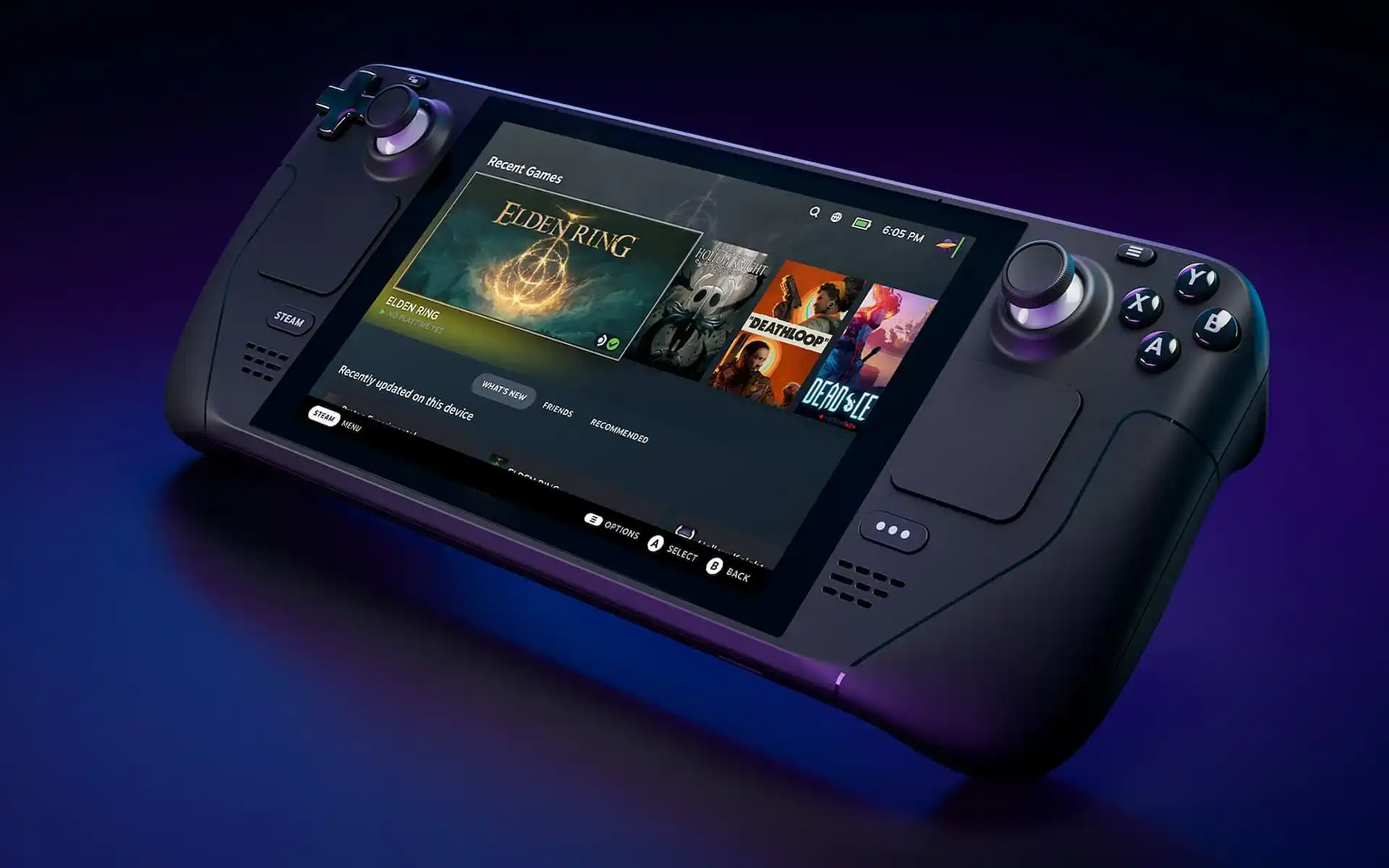The highly anticipated mobile gaming system known as the Steam Deck gives users the ability to play their favorite PC games wherever they go. Like any complicated technological device, it is not without flaws, and one issue customers have reported is a broken touchscreen.
The Steam Deck’s touchscreen is an essential part that makes it possible to navigate the system easily and interact with games and programs.
The whole game experience might be hampered when it stops responding or becomes unresponsive. We will examine various potential fixes and diagnostic procedures in this article to assist in resolving the touchscreen difficulties on the Steam Deck.
We will discuss a variety of solutions to this issue, from checking for software updates and recalibrating the touchscreen to inspecting hardware connections and contacting Valve for assistance. Here is our guide on the Steam Deck touchscreen not working.
Why is Steam Deck touchscreen not working?
Short answer: Steam Deck touchscreen is not working due to a software glitch or bug that needs to be addressed through an update or patch. Physical damage or a loose connection may also be the culprit. Additionally, incorrect calibration settings or incompatible software can cause touchscreen issues.
Software-related difficulties can be cited as one of the most significant contributors to touchscreen troubles that have been experienced on the Steam Deck. These difficulties might range from merely annoying hiccups to incompatibilities with specific games or programs. Consider the following list of potential reasons that are connected to software:
1. Outdated Software and Firmware
Make sure that the firmware version running on your Steam Deck is the most recent available. Firmware updates are made available by Valve on a regular basis. These upgrades solve a variety of issues and enhance device performance.
You may check for available updates by going to the settings menu of Steam Deck or visiting the official website of Valve.
2. Compatibility with the Game or Application
There is a possibility that certain games or programs are not optimized for the touchscreen of the Steam Deck.
It is advised that you examine the game’s prerequisites or forums to determine whether or not other people have encountered touchscreen troubles with the particular program. Whether it is at all feasible, try running other games or programs to see whether the issue still occurs after doing so.
3. Calibration Settings
On occasion, the calibration of the touchscreen may become wrong, which may result in touch inputs that are either unresponsive or unpredictable. Find the touchscreen calibration option in the settings of the Steam Deck by navigating to those settings. If the problem still persists, try following the directions that appear on the screen to recalibrate the touchscreen, and see if that helps.
4. Physical Damage
It is possible for the touchscreen to malfunction if the Steam Deck has been subjected to any form of physical harm, such as being dropped or struck.
Conduct a thorough inspection of the item to look for any obvious evidence of damage, such as cracks, scratches, or portions that are inoperable. In the event that physical damage is discovered, it is recommended that additional help be requested from Valve support or from an authorized service center.
5. Loose Connection
Unpredictable touch responses or full touchscreen failure might be the result of a cable for the touchscreen that is either loose or poorly attached. If you are confident enough to do so, you may gently open the Steam Deck and check to see that all of the internal connections are in a safe and secure position.
However, use extreme caution, as tampering with the equipment may render the warranty null and invalid. If problems persist, it is best to seek the assistance of trained professionals in the field.
6. Touchscreen Failure
In extremely unusual instances, the touchscreen device itself may develop a fault or become completely inoperable. This may be the result of flaws in the production process or simple wear and tear over time. If you have tried every feasible solution to the problem and the touchscreen is still malfunctioning.
You should get in touch with the Valve support team to receive more instructions or to discuss the possibility of getting a replacement.
7. Temperature Extremes
Temperatures that are either too hot or too cold might have an adverse effect on the operation of touchscreens. Operating the Steam Deck in situations with temperatures that are outside of its suggested temperature range might cause the touch inputs to become unresponsive or incorrect.
Check to see that the temperature at which you use the device falls within the recommended range that has been established by Valve.
8. Being moist or humid
Damage to electrical components, including the touchscreen, can be caused by prolonged exposure to high quantities of moisture or humidity. In order to protect the Steam Deck from potential harm, you should steer clear of using it when the weather is damp or rainy and keep it away from liquids.
Fix: Steam Deck touchscreen not working
We will investigate a variety of possible causes and give you with actionable solutions that will assist you in regaining full functioning, ranging from straightforward software fixes to checks of the hardware.
Method 1: Check for Updates
First things first, check to be that your Steam Deck is on the most recent available firmware version. The video game company Valve is known for putting out regular updates that fix problems and boost performance.
Check for available updates by navigating to the Steam Deck settings menu and selecting that option. In order to rule out problems connected to software, make sure that any pending updates are installed.
Method 2: Restart the Steam Deck
The majority of the time, touchscreen issues may be fixed with a simple restart. After depressing and holding the power button for a few seconds, choose “Restart” from the menu of available options. After the device has finished restarting, check to see whether the touchscreen is functioning normally again.
Method 3: Recalibrate the Touchscreen
An inaccurate calibration of the touchscreen may result in a lack of response. To re-adjust the calibration of the touchscreen, go to the settings menu of the Steam Deck, look for the option to calibrate the touchscreen, and then follow the instructions that appear on the screen. This step guarantees that the gadget will correctly record any touch inputs that are given to it.
Method 4: Test with Different Games and Applications
There is a possibility that certain games or programs will not be compatible with the touchscreen of the Steam Deck. It is recommended that you test the problem with a number of different apps by using a number of different programs.
If the problem is only occurring in certain games, check with the producers of those games for any new updates or fixes they may have released.
Method 5: Physical Inspection
Conduct a thorough inspection of the Steam Deck to look for any obvious signs of damage. Any signs of physical damage, such as cracks, scratches, or dents on the screen or body, might indicate that the touchscreen’s operation has been compromised.
In the event that you discover any physical damage, please get in touch with Valve support or one of the authorized service centers for additional help.
Method 6: Examine the Connections
Touch inputs that do not register might be the consequence of a touchscreen cable that is not properly attached or that is loose. If you feel confident enough to do so, open the Steam Deck according to the instructions provided by the manufacturer, and check to make sure that all of the internal connections are secure.
However, use extreme caution, as any tampering with the apparatus may result in the warranty being rendered null and invalid. If you are unclear about what to do, it is best to get help from expert specialists or contact Valve support.
Method 7: Perform a Hard Reset
A hard reset can fix a variety of problems that are connected to the hardware. After turning off the Steam Deck, press and hold the power button as well as the volume up button for about 15 seconds all at the same time. Put the buttons down and wait for the gadget to restart once you’ve done so. Check to see whether the touchscreen begins to operate as it should.
Method 8: Contact Valve Support
In the event that you have tried all of the available software and hardware troubleshooting options without success, it is necessary to get in touch with the Valve support team. Give them a comprehensive explanation of the problem, including a list of any measures you’ve previously tried to fix the issue.
They are able to provide more information, make arrangements for repairs if they are required, and provide a possible replacement if the gadget is still covered by its warranty.
Method 9: Check for Temperature and Humidity
The operation of touchscreens can be disrupted by exposure to conditions such as high temperatures or wetness.
Make sure that when you use the Steam Deck, you do it within the appropriate temperature range that has been stated by Valve. It is best to avoid running the device in settings that are extremely damp or moist to reduce the risk of damaging the touchscreen or any of the other components.
Method 10: Cleaning the Screen
The touchscreen may become less sensitive over time as a result of debris, dust, or fingerprints that have accumulated on it over time. When wiping the screen, you should either use a soft, lint-free cloth that has been mildly soaked with water or a gentle screen cleaner. Keep away from the touchscreen any strong chemicals or abrasive items that might potentially cause harm to it.
Follow us on Twitter & like our Facebook page for more post-updates.

An experienced gaming content writer who emphasizes on offering the most recent information and how-to tutorials for the trending titles. Being a Hardcore gamer himself, he likes to try an array of games and likes to spend his time exploring them. He likes to unwind by listening to R&B music when he’s not writing about gaming stuff.

